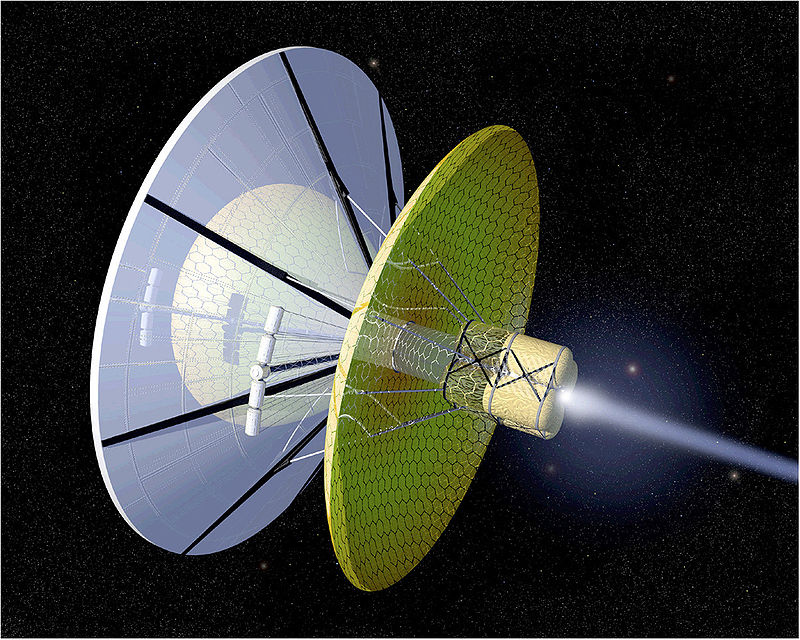 Interstellar space travel is manned or unmanned travel between stars. Interstellar travel is much more difficult than interplanetary travel: the distances between the planets in the Solar System are typically measured in standard astronomical units (AU)—whereas the distances between stars are typically hundreds of thousands of AU, and usually expressed in light years. Because of this some combination of great speed (some percentage of the speed of light) and huge travel time (lasting from years to millennia) would be required.
Interstellar space travel is manned or unmanned travel between stars. Interstellar travel is much more difficult than interplanetary travel: the distances between the planets in the Solar System are typically measured in standard astronomical units (AU)—whereas the distances between stars are typically hundreds of thousands of AU, and usually expressed in light years. Because of this some combination of great speed (some percentage of the speed of light) and huge travel time (lasting from years to millennia) would be required.
These speeds are far beyond what current methods of spacecraft propulsion can provide. The energy required to propel a spacecraft to these speeds, regardless of the propulsion system used, is enormous by today’s standards of energy production. At these speeds, collisions by the spacecraft with interstellar dust and gas can produce very dangerous effects both to any passengers and the spacecraft itself.
A number of widely differing strategies have been proposed to deal with these problems, ranging from giant arks that would carry entire societies and ecosystems very slowly, to microscopic space probes. Many different propulsion systems have been proposed to give spacecraft the required speeds to cross interstellar space: these range from different forms of nuclear propulsion, to beamed energy methods that would require megascale engineering projects, to methods based on speculative physics.
For both unmanned and manned interstellar travel, considerable technological and economic challenges would need to be met. Even the most optimistic views about interstellar travel are that it might happen decades in the future; the more common view is that it is a century or more away.